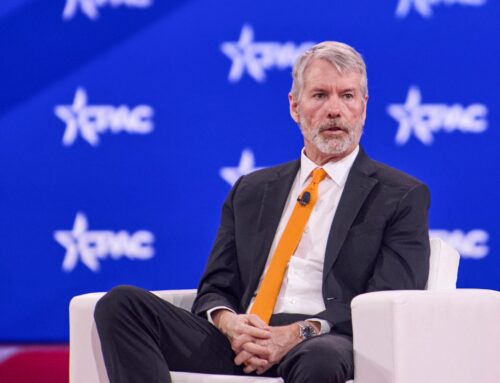Climate Pollutant Phasedown Plan Carries Unresolved PFAS Risk
February 10, 2025
Industry-driven phasedown efforts of a highly potent climate pollutant come with burgeoning concerns of PFAS exposure, and with the Trump administration’s deregulatory agenda underway, the problem isn’t going to be addressed at the federal level soon.
Former President Joe Biden initiated a series of rules targeting the use of heat-trapping hydroflourocarbons, or HFCS, primarily in the cooling and refrigeration industry, to combat the use of chemicals with warming power higher than carbon dioxide.
But the popular, bipartisan plan has a problem: federally approved HFC alternatives also fall under the definition of per- and polyfluoroalkyl substances, or PFAS.
These alternatives, called hydrofluoroolefins, or HFOs, are synthetic fluorinated gasses containing carbon, hydrogen, and fluorine. They don’t stay in the atmosphere for long, making them an ideal solution in the HFC phasedown.
HFOs also contain fully fluorinated carbon atoms, which means they can potentially break down into PFAS or be considered PFAS themselves. PFAS are hard to get rid of and can cause serious long-term health harms with high exposure.
“We’ve been on this treadmill of one really terrible chemical replaced by another, incrementally not-as-bad chemical,” according to Avipsa Mahapatra, climate campaign director at the Environmental Investigation Agency.
PFAS carried through air emissions is already an under-explored area of exposure, and even further behind in regulation consideration as the US definition of PFAS continues to evolve. In President Donald Trump’s second term, there is little hope that the issue could be addressed.
Trump has already made it clear he plans on scaling back regulations en mass. A recent order from January promises to slash ten regulations for every one that the executive promulgates. Certain PFAS proposals are already among the rules on Trump’s chopping block.
“I don’t think this is going to be high on the Trump administration’s radar,” said John Gardella, who advises businesses and chairs CMBG3 Law PC’s PFAS, Environmental, Risk Management & Consulting practice group. “I don’t think it will even be on the radar, is my candid opinion.”
The EPA did not return a request for comment on whether they have looked into the issue.
Natural Alternatives
Some research is already beginning to show that popular alternatives like HFOs are breaking down into highly persistent “forever chemicals.”
HFO-1234yf, a federally-approved HFC alternative used in car air conditioners, can break down into trifluoroacetic acid, which is one of the most persistent PFAS in the environment and human bodies.
Some advocates are steadily calling for more widespread “natural” alternatives, such as ammonia and carbon dioxide, which can be flammable, among other risks, but are better for the climate and public health, according to proponents.
“None of the refrigerant alternatives are truly risk free,” according to super pollutant reduction advocate Richie Kaur at the Natural Resources Defense Council. “There’s no rainbows and unicorn solution, but these don’t have the issues related to PFAS because they don’t have fluorinated carbon atoms in them.”
More widespread adoption of natural refrigerants often bumps up against building and safety codes, according to Beth Porter, climate Policy Analyst at Environmental Investigation Agency.
“We’re seeing the successful adoption in other parts of the world, and really pointing to these examples as a reason for why we need to update safety standards that are outdated in the US to embrace the adoption of these natural refrigerants,” Porter said.
Deregulation Threats
The US is behind the European Union, who is not only further along in its policymaking around PFAS generally, but is also actively debating bans on fluorinated gases as an HFC alternative.
Far from addressing the PFAS connection in greenhouse gas regulations, the US is currently poised on a deregulatory cliff, as Trump promises to systematically unwind a litany of environmental regulations finalized under Biden.
The HFC ban is more insulated from the onslaught, with the exception of a recently finalized rule on leak protection, which is currently subject to a Congressional Review Act resolution.
“It was literally our idea to be regulated under this, which is unusual, but that is the case,” according to Francis Dietz, vice president of public affairs at The Air-Conditioning, Heating, and Refrigeration Institute.
Deitz said industry hopes the regulations stick as status quo, as the sector has moved forward with business under the ban. This is good for climate mitigation that is now in the crosshairs of Trump deregulation, but doesn’t account for potential risks to public health.
“It is our job to ensure that we don’t get ourselves into a position where that is the only choice: where we either damage the climate or we poison our planet,” Mahapatra said.
Search
RECENT PRESS RELEASES
Related Post




